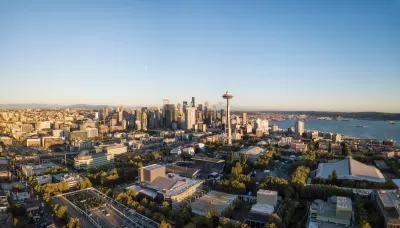As more and more cities look to adapt vacant office buildings into homes, a new analysis from Urban Institute says some cities will benefit more than others.

A new analysis from the Urban Institute takes a look at which cities will get the biggest bang for their buck out of office to residential conversions. According to UI Research Associate Jorge González-Hermoso, facing unprecedented commercial vacancy rates and a national shortage of approximately four million homes, local governments across the country are incentivizing adaptive reuse of vacant offices into housing. “One estimate points to 58,000 new housing units currently being built in the US from repurposed office space,” he writes.
But just as some buildings are better suited than others to residential conversion (e.g., inoperable windows and larger floorplans that decrease window access), some cities stand to benefit more from conversion incentive policies than others.
To determine which, González-Hermoso built a conversation disposition index based on various factors illustrating office distress and housing supply need. According to his analysis, these five places are primed for office to residential conversion:
- San Mateo County, California
- Seattle
- Phoenix
- Atlanta
- San Francisco
The article also offers tips on how stakeholders can promote adaptive reuse of office space, including land-use reform, building code updates, streamlined permitting processes, and tax credits or abatements.
FULL STORY: Which Cities Would Benefit Most from Converting Offices into Housing?

Trump Administration Could Effectively End Housing Voucher Program
Federal officials are eyeing major cuts to the Section 8 program that helps millions of low-income households pay rent.

Planetizen Federal Action Tracker
A weekly monitor of how Trump’s orders and actions are impacting planners and planning in America.

Ken Jennings Launches Transit Web Series
The Jeopardy champ wants you to ride public transit.

Crime Continues to Drop on Philly, San Francisco Transit Systems
SEPTA and BART both saw significant declines in violent crime in the first quarter of 2025.

How South LA Green Spaces Power Community Health and Hope
Green spaces like South L.A. Wetlands Park are helping South Los Angeles residents promote healthy lifestyles, build community, and advocate for improvements that reflect local needs in historically underserved neighborhoods.

Sacramento Plans ‘Quick-Build’ Road Safety Projects
The city wants to accelerate small-scale safety improvements that use low-cost equipment to make an impact at dangerous intersections.
Urban Design for Planners 1: Software Tools
This six-course series explores essential urban design concepts using open source software and equips planners with the tools they need to participate fully in the urban design process.
Planning for Universal Design
Learn the tools for implementing Universal Design in planning regulations.
Heyer Gruel & Associates PA
Ada County Highway District
Institute for Housing and Urban Development Studies (IHS)
City of Grandview
Harvard GSD Executive Education
Toledo-Lucas County Plan Commissions
Salt Lake City
NYU Wagner Graduate School of Public Service





























